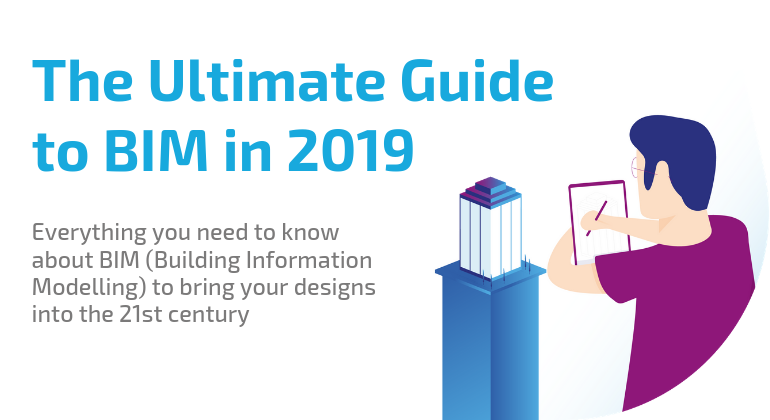Beyond smart cities: the state of civil engineering in 2019

Smart Cities: the catalyst
Most of the world’s cities have three things in common. They had access to fresh water, were built in places that were easy to defend, and were convenient for trading. As cities have evolved what they need to thrive has also changed – both in scale and complexity. Modern cities need reliable energy sources, efficient transport and effective sewerage and communications networks.
Infrastructure is a vital part of any society, and are a driving force in stimulating economic growth, improve the health and well-being of the population and protect communities from the effects of environmental change.
One way of meeting this predicted growth is to build cities from scratch. This is already happening in South Korea with the construction of Songdo — the world’s first ‘smart’ city. Urban planning from the foundations up isn’t always possible. A major future challenge for civil engineers will be finding ways to retrofit existing infrastructures to meet the needs of city residents. The challenge for engineers and planners will be to remember that cities are much more than systems, sensors and tech innovation. Urban infrastructure must serve the needs of citizens and communities
Technology transformation: the driver
With the pressing need for smart cities at the forefront, civil engineers are reinventing the whole of the built environment. The growth in the use of modern digital technology is creating new ways of working, with potential for higher quality and faster response times in planning, delivering and maintaining infrastructure. This technology is beginning to have an impact from the first idea stage, through to design, site selection and surveying to final construction and ongoing maintenance.
New data capture opportunities
Tools for LiDAR or photometric scanning are becoming more commonplace to capture real-world point cloud data and translate it into a workable digital model. This use of reality capture technology is driven by advances like multi-stage, vector-based point cloud processing that are dramatically reducing the cost of commissioning 3D surveys.
Other significant trends in this field are the use of drones and thermal imaging technology to provide even more usable data and the ability to upload of this data to cloud services for supply chain collaboration. Database -first storage methodologies like those used for BIM (Building Information Modelling) are further improving the utility of this information once captured.
Use of Augmented and Virtual Reality
Augmented Reality (AR) is a technology that overlays 3D digital content seamlessly onto the real world, using specialised hardware and software. Augmented Reality (AR) and Virtual Reality (VR) are already being used to analyse proposed structures before construction begins and allow users to digitally experience and“walk through” a space well before it is finished.
3D Printed Structures and Models
Planning innovation has been driven by the growth of smart cities. The production of smart building models can provide data for urban, energy, sustainability and design planning. 3D printers are now also an integral part of the civil engineering toolkit. Engineers are using 3D printed models to help bridge gaps between visual design and construction planning. This technology is now even “printing” homes.
Modular Construction
The move to creating most of a building or piece of infrastructure in a factory is leading to a radical rethink about the nature of civil engineering projects. When a building is constructed off-site to vastly improved tolerances due to the use of laser scanning and point cloud creation, construction turns into a logistics exercise. Chinese developer Broad Sustainable Building completed a 57-storey skyscraper in 19 working days using this method.
From cost to benefits: the business imperative
The move to digital transformation is always accompanied by the question of return on investment (ROI). In an industry where meeting cost forecasts is the ultimate measure, this can be even more problematic.
Cost and time overrun on major projects is a global industry challenge. Major civil engineering projects by their nature are large, unique and are built over a long time period. The Institution of Civil Engineers has highlighted an imperative to reduce the disparity between cost forecasts and outturns; to change the narrative and ensure the wider public, the end users, are aware of the whole-life benefits of large-scale infrastructure projects.
The Institution is recommending that the success measures for projects should shift from an over-focus on costs towards ‘whole-life’ benefit. For this approach to succeed a common “language” or taxonomy is needed to ensure trusted measurement, transparency and accuracy of reported data – which is why information and data management are becoming the key discussion points for the civil engineering profession. Smart cities deliver this. By achieving these ends, different types of civil engineering projects will gain funding.
Information management: the key
Ten years ago, Building Information Modelling was forecast to be a game-changer, leading to greater efficiency and enabling collaboration between partners. Its aim was to deliver a project around a common dataset. Interactive technology, data sharing, knowledge transfer and sector-wide training are still key components of an integrated and industrialised business model for construction, but there is a way to go.
In January 2019, ICE and ALLPLAN UK surveyed 250 ICE members to measure the profession’s latest progress with implementing BIM.
Experts in BIM ranked the following sources of errors that lead to increased risks in projects:
- Exchanging information between parties (45%)
- Design changes (55%)
- Incomplete data from other design parties (73%)
- Incompatible software (43%)
- Exchanging information between software systems (40%)
It highlighted a lack of understanding about project workflows across the supply chain, and a lack of skilled people who really understand how to build and interrogate datasets. Practitioners were commonly comfortable working with 2D documentation and using 3D models to assist, but often less comfortable with checking and approving deliverables in full 3D.
The future: an industry-wide transition
There is a fear within the profession that civil engineers are falling behind the tech development curve. Infrastructure is fast becoming an information-based industry, and engineers are realising that while the basic core physical principles of civil engineering won’t change, they are now also information managers.
As the construction supply chain turns more into an eco-system of stakeholders, it will become crucial that engineers, clients, and contractors understand their role in setting project specifications, information requirements, and validation and verification processes at handover stages.
The advent of digital working, including building information modelling will herald a wide shift in skillsets. End-user expectations will continue to rise, with more stakeholders coming into the construction process.
The engineer’s role, while always maintaining its physical and structural core will start to embrace collaboration, and information management, and migrate towards analysis, interpretation, interpersonal and ‘soft’ skills. Being able to access and use reality capture technology, such as point clouds, is critical. Linking the physical and digital worlds delivers benefits that we are only just starting to comprehend.
Tags: engineering


